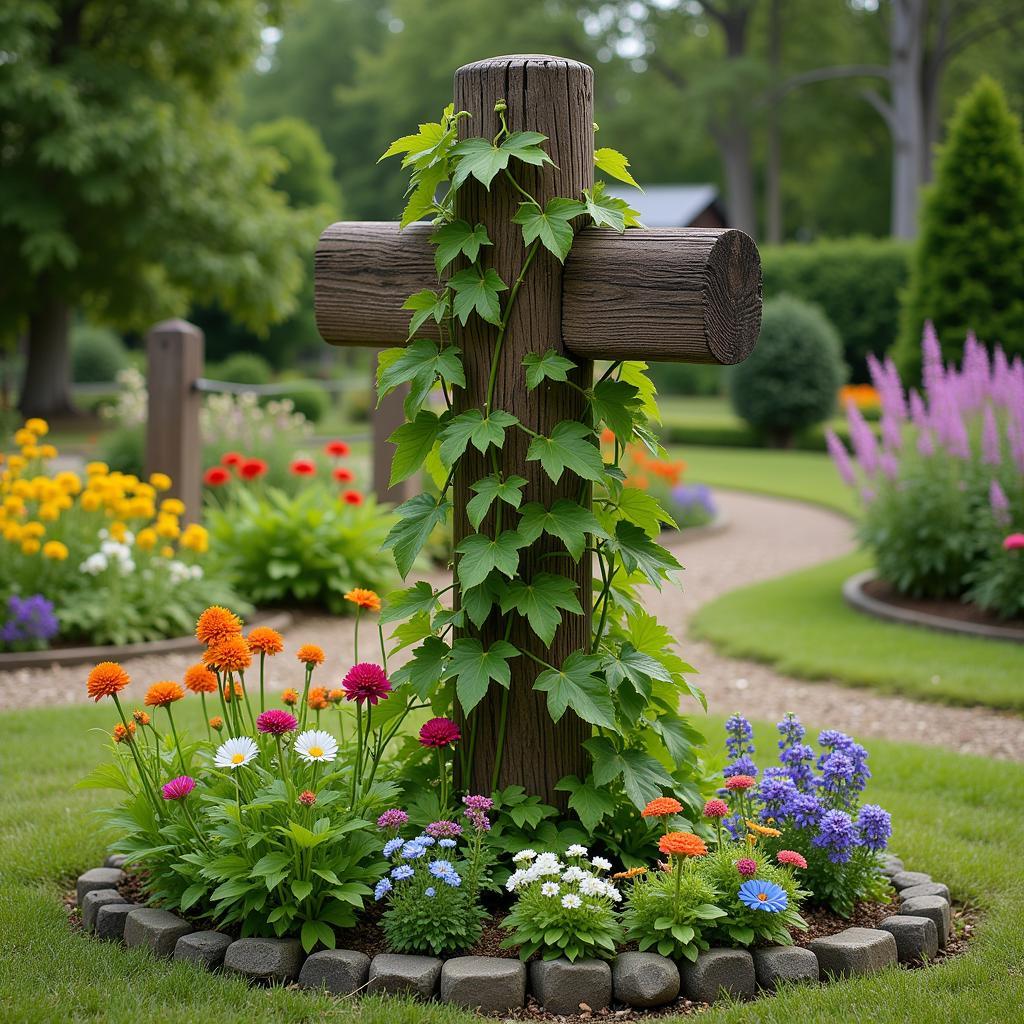Antique Horse Hitching Posts evoke a sense of nostalgia, whispering tales of a time when horses were an integral part of daily life. These functional pieces of history aren’t just relics; they’re charming additions to any property, adding a touch of rustic elegance and a nod to the past. This article delves into the world of antique horse hitching posts, exploring their history, types, and how to incorporate them into your modern landscape.
Choosing an antique horse hitching post can be a fascinating journey. From the ornate Victorian designs to the simpler, more functional posts of the American West, there’s a style to suit every taste. The materials vary as well, from cast iron to wood, each offering its own unique charm.
A Glimpse into the History of Hitching Posts
Before the advent of automobiles, horses were the primary mode of transportation. Hitching posts, therefore, were essential fixtures in towns and cities, providing a secure place to tie up one’s horse while conducting business or visiting friends. These posts weren’t merely functional; they often served as decorative elements, showcasing the craftsmanship and artistry of the era. Some were adorned with intricate carvings, while others featured simple, yet elegant designs. The history of the antique horse hitching post reflects the evolution of equestrian culture.
From the simple wooden posts of early settlements to the elaborately decorated cast iron versions of the Victorian era, hitching posts mirrored the changing styles and societal values. The popularity of antique horse hitching posts waned with the rise of the automobile, yet their enduring appeal remains. They offer a tangible link to a bygone era, reminding us of the important role horses played in shaping our history.
You can even find cast iron horse heads for sale.
Types of Antique Horse Hitching Posts
Antique horse hitching posts come in a variety of styles and materials, each with its own unique characteristics. Here’s a closer look at some of the most common types:
-
Cast Iron Hitching Posts: Known for their durability and ornate details, cast iron hitching posts were particularly popular during the Victorian era. They often feature intricate designs, such as horse heads, lions, and other decorative motifs. These are often highly sought after by collectors.
-
Wooden Hitching Posts: Simple and functional, wooden hitching posts were often made from sturdy timbers like oak or cedar. While less ornate than their cast iron counterparts, they possess a rustic charm that complements a variety of landscapes.
-
Bollard Hitching Posts: These short, stout posts were typically made of stone or concrete and were often used in urban settings. While primarily functional, they can add a touch of historical authenticity to a property.
Incorporating Antique Horse Hitching Posts in Your Landscape
An antique horse hitching post can be a beautiful and functional addition to any property, adding a touch of history and charm to your landscape. Here are a few ideas on how to incorporate them:
-
Driveway Entrance: Place a hitching post near your driveway entrance to create a welcoming focal point.
-
Garden Feature: Use a hitching post as a decorative element in your garden, perhaps surrounded by flowering vines or climbing roses.
-
Pathway Marker: Line a pathway with smaller hitching posts to create a charming and unique walkway.
Johnathan Fitzwilliam, a renowned historical architect, notes, “Antique hitching posts are more than just decorative pieces; they are a testament to the craftsmanship and artistry of past generations.”
Where to Find Antique Horse Hitching Posts
Locating an antique horse hitching post can be an adventure in itself. Here are a few places to start your search:
-
Antique Shops and Flea Markets: These are excellent places to discover unique and often affordable hitching posts.
-
Online Marketplaces: Websites like eBay and Etsy offer a wide selection of antique hitching posts from sellers across the country.
-
Architectural Salvage Yards: These yards specialize in reclaimed building materials and often have a selection of antique hitching posts.
 Antique Horse Hitching Post in a Garden Setting
Antique Horse Hitching Post in a Garden Setting
Eleanor Vance, a seasoned antiques dealer, advises, “When searching for an antique hitching post, pay attention to the details. Look for signs of wear and age, which add to its character and authenticity.”
You can also find a unique cast iron horse head for your collection.
Conclusion
Antique horse hitching posts offer a captivating blend of history, functionality, and artistic charm. Whether you choose a grand cast iron design or a simple wooden post, incorporating one into your landscape is a wonderful way to add character and a touch of the past to your property. These timeless pieces serve as a reminder of a bygone era and add a unique touch to any outdoor space. Consider adding an antique horse hitching post to your landscape and enjoy the timeless beauty it brings.
FAQ
- What is the average price of an antique horse hitching post?
- Where can I find someone to restore an antique horse hitching post?
- What are the best materials for cleaning a cast iron hitching post?
- Are there any regulations regarding installing a hitching post on my property?
- How can I tell if a hitching post is truly antique?
- What are some common designs found on antique hitching posts?
- Can I use a modern hitching post for tying up my horse?
Need more assistance? Contact us at Phone Number: 0772127271, Email: [email protected] Or visit us at: QGM2+WX2, Vị Trung, Vị Thuỷ, Hậu Giang, Việt Nam. We have a 24/7 customer service team.